Kyoto Events in November 2023
Visitors may enjoy a number of spectacular events and festivals throughout November in Kyoto, Japan.
| Date | Event | Category |
|---|---|---|
| November 1st-10th, 2023 | Gion Odori | Dance |
| November 3rd, 2023 | Aki Matsuri | Festival |
| November 3rd, 2023 | Kyokusui no Utage | Poetry |
| November 8th, 2023 | Hitaki-sai Fire Festival | Festival |
| November 9th, 2023 | Yoroi Kizome-shiki | Tradition |
| November 10th-23rd, 2023 | Kodai-ji Autumn Illumination | Illumination |
| November 11th-19th, 2023 | Kyokusui no En | Exhibition |
| November 18th-19th, 2023 | Ikenobo Autumn Tanabata Exhibition | Exhibition |
| November 18th, 2023 | Umekoji Park Handicrafts Market | Market |
| November 25th, 2023 | Ennichi (Tenjin-san) Market | Market |
Gion Odori
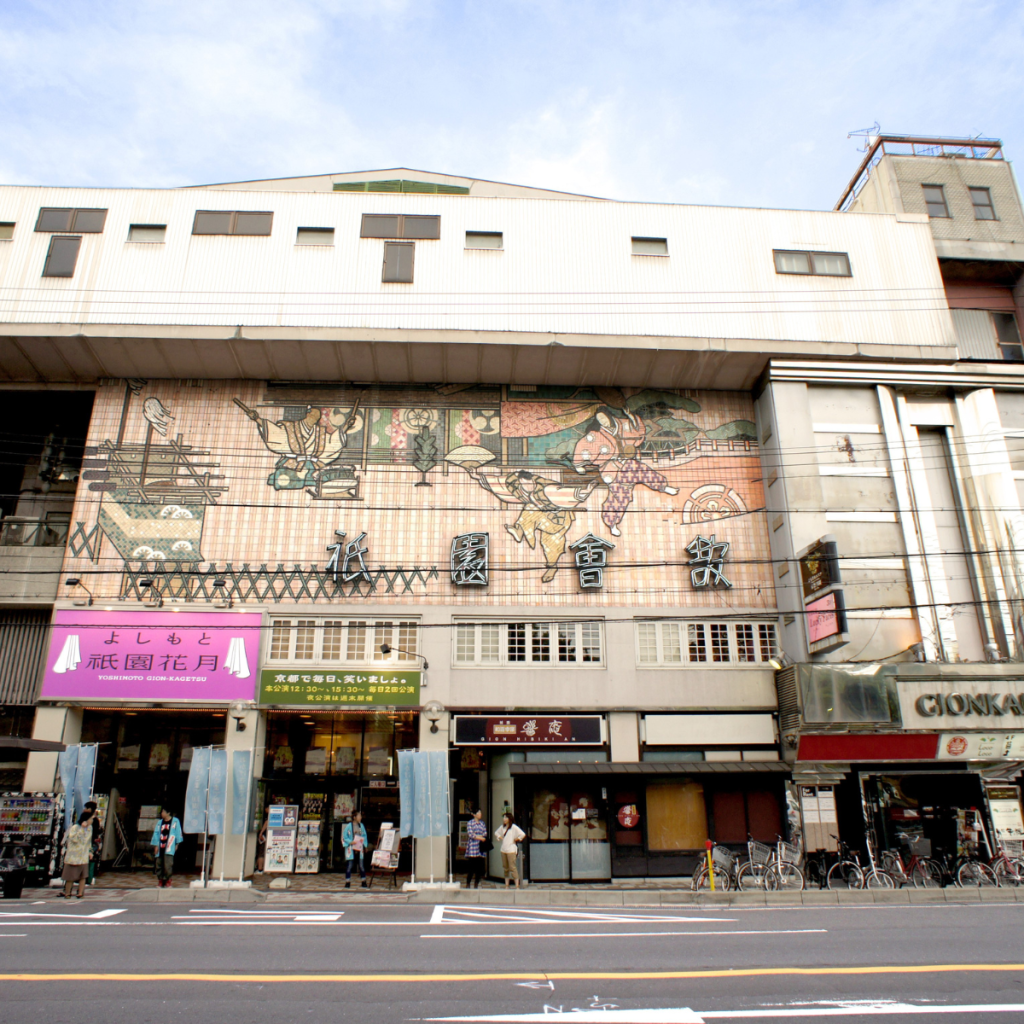
Date: November 1st – 10th, 2023
Overview of Gion Odori
The Gion Odori is a unique public dance performed by the geiko (geisha) and maiko (apprentice geisha) of Kyoto, held at the [Gion Kaikan Theatre]. This captivating performance takes place annually from November 1st to November 10th, offering an opportunity for visitors to witness the artistry and grace of Kyoto’s renowned geisha culture. Unlike most similar events occurring in spring during the cherry blossom season, Gion Odori is the only annual odori performance in the fall, coinciding with the vibrant colors of autumn leaves.
The History and Significance of Gion Odori
Gion Odori first graced Japan in 1894, making it one of Kyoto’s longest-running shows. Held at [Gion Kaikan], which is located near Yasaka Shrine, this annual event is a key part of Kyoto’s prestigious cultural heritage and autumn calendar. As one of the smallest performances featuring maiko and geiko, Gion Odori offers spectators an unparalleled chance to see these talented artists up close.
A Closer Look at Kyoto’s Kagai Districts
Kyoto boasts five kagai (geisha districts), each home to many geiko and maiko dedicated to preserving traditional Japanese dance and music. These districts organize large-scale dances open to the public once a year. However, most of these events take place during springtime when cherry blossoms are in full bloom. The Gion Higashi district stands out, with its exceptional Gion Odori performance scheduled in November to align with the heart of fall colors season.
What to Expect During Gion Odori
The Gion Odori performance encompasses an hour of splendid dancing by maiko and geiko, showcasing their skill, elegance, and dedication to their craft. With two performances held daily, one at 13:30 and another at 16:00, audiences can choose a convenient time slot to witness this mesmerizing spectacle.
Tickets for Gion Odori are priced between 3,500 and 5,000 yen, depending on the chosen seat. Additionally, attendees can purchase a program booklet filled with colorful photos for an extra 600 yen.
Experience Kyoto’s Autumn Culture First-hand
If you are planning a visit to Kyoto during the fall season, the Gion Odori dance is a must-see attraction. This exclusive event provides a rare glimpse into Kyoto’s rich cultural history and the fascinating world of its renowned geiko and maiko. Be sure to catch this mesmerizing performance from November 1st to November 10th at the Gion Kaikan Theatre.
Aki Matsuri
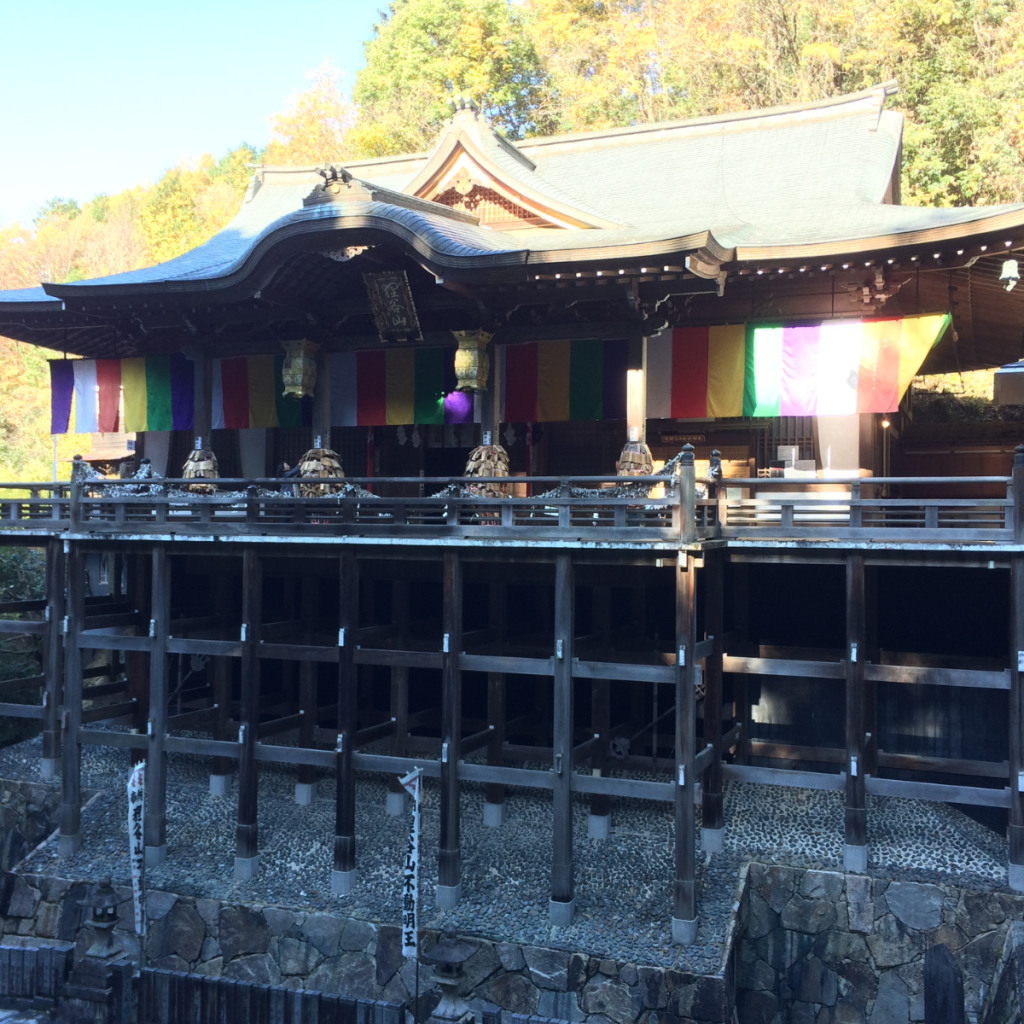
Date: November 3rd, 2023
Traditional Fall Festival Brings Spiritual Transformation to Kyoto Shrine
On November 3rd, the Tanukidani-san Fudō-in Temple located in Kyoto, Japan, welcomed locals and visitors to participate in the annual Aki Matsuri celebration. Aki Matsuri, which means “Fall Festival,” is a time-honored tradition that marks the change of seasons in Japan. In line with similar seasonal rituals across the country, this festival focuses on purifying oneself from past wrongs, praying for blessings, and starting fresh.
The Rituals of Aki Matsuri and Shugendō Practice
A key component of the Aki Matsuri experience includes writing personal wishes on wooden tablets. These tablets are then collected by monks who practice shugendō, a unique form of mountain asceticism that combines Buddhist belief with an emphasis on physical endurance and spiritual discipline.
During the ceremony, these monks throw the wooden tablets into a sacred bonfire amidst the chants of Buddhist sutras. As the flames engulf their physical tokens, participants believe their wishes become blessed and purified, embarking upon the new season with hope and positive energy.
Discovering Tanuki Magic at Tanukidani Fudoin
Although not as well-known as some other shrines in Kyoto, Tanukidani Fudoin has an enchanting allure that makes it worthy of discovery. One distinctive feature that sets this temple apart is its abundance of tanuki (raccoon) statues scattered throughout the grounds. These enigmatic creatures hold spiritual significance in Japanese folklore, often considered shape-shifting tricksters who possess certain magical powers.
This connection to tanuki lore provides an added element of wonder for those participating in the Aki Matsuri celebrations at Tanukidani Fudoin, making it a truly unique experience for all who attend.
Embracing the Power of Renewal and New Beginnings
The Aki Matsuri festival at Tanukidani-san Fudō-in Temple represents a vital aspect of Japanese culture, one that signifies the importance of embracing change and seeking purification through prayer and tradition. Through this focused ceremony and the powerful practices of shugendō, participants engage in an act of spiritual cleansing that enables them to move forward into the future with renewed vigour.
With the beauty of Kyoto’s fall season as its backdrop, the tranquil atmosphere, distinctive tanuki statues, and profound symbolism combine to make the Aki Matsuri at Tanukidani Fudoin an enriching event not to be missed.
Kyokusui no Utage
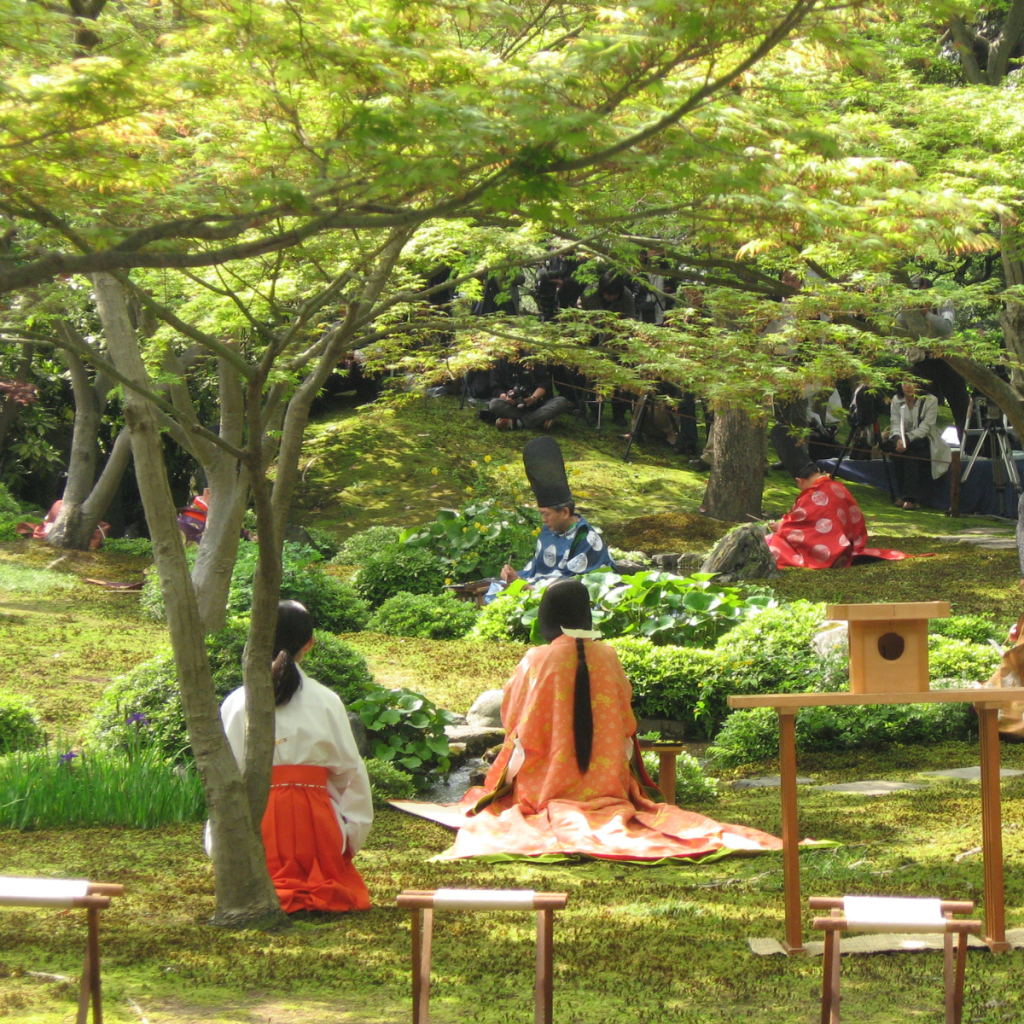
Date: November 3rd, 2023
Celebrating Poetry and Tradition at Jonangu Shrine
Kyokusui no Utage, an event with roots dating back to the Nara (710-794) and Heian periods (794-1185), continues to enchant visitors in the beautiful Shrine of Jonangu, located in Fushimi – an area famed for its sake breweries. The Meandering Water Banquet is held biannually, in April and November, featuring poets donned in Heian court attire, reciting verses by a winding river while enjoying cups of sake drifting past on picturesque water.
Poetry Inspired by The Tale of Genji
The highlight of the event is the uniquely themed tanka poetry. Each year, a topic related to the Japanese classic The Tale of Genji is announced on the day, inspiring poets to weave their words before a floating sake cup passes by them on Mandarin duck-shaped vessels. Upon completing their poems, they drink the sake from these elegant cups. Once all seven poets have finished their creations, ancient customs dictate that Shinto priests recite these poems with an intonated voice.
The Graceful Dance of Shirabyoshi
A mesmerizing performance by Shirabyoshi female dancers adds charm and elegance to the occasion. Accompanied by Japanese court music, these dancers exhibit dignified expressions as they enchantingly glide across the central stage. Their performance marks the beginning of the Kyokusui no Utage event.
Children in Traditional Attire Join the Celebration
A noteworthy aspect of this event is the involvement of children dressed in traditional suikan kimonos. These young participants are crucial in ensuring smooth sailing for the Mandarin duck vessels carrying sake cups down the river. If any vessel becomes stuck, children use their sticks to gently prod them back on course.
Following the conclusion of Kyokusui no Utage, visitors are welcome to float a human-shaped paper cut-out on the river for a small fee.
Free Entrance to the Shin’en Garden
On the days of Kyokusui no Utage, visitors can enter the picturesque Shin’en Garden free of charge. Boasting five different garden styles, this scenic area promises an unforgettable experience. In spring, wisterias and azaleas bloom gloriously, while autumn reveals stunning foliage. Traditional matcha tea and sweets are served within the garden’s tea room by maiko shrine maidens, providing a unique opportunity to appreciate this cultural gem fully.
Tips
Please note that access to the Heian Garden may be restricted in case of overcrowding due to its limited space. Eating, drinking, and smoking are prohibited within the garden. Pets are not allowed inside, and group visits to this event are not encouraged.
As Kyokusui no Utage carries on in the 21st century, it remains an important link to Japan’s cultural past and continues to offer an insight into the lives of ancient nobles through a serene blend of poetry, dance, and sake.
Hitaki-sai Fire Festival
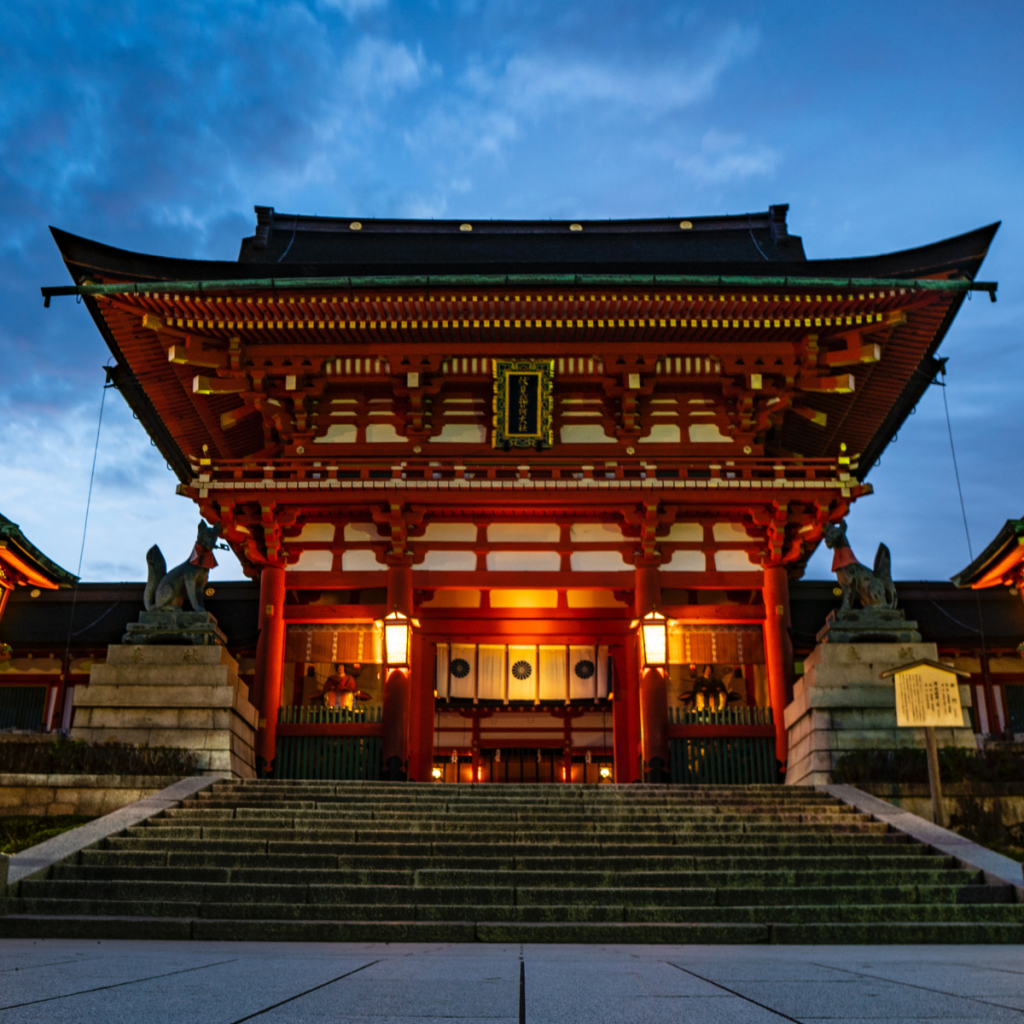
Date: November 8th, 2023
Celebrating the harvest season and Inari Shrines through prayer and flames
Every year in November, the Hitaki-sai Fire Festival illuminates Kyoto with an exuberant display of faith and gratitude. As one of the most prominent fire festivals that marks the harvest season, the Fushimi Inari Shrine hosts this ancient tradition. With more than 30,000 Inari shrines across the nation, Fushimi Inari attracts thousands of visitors who come from varied regions of Japan to witness this colorful spectacle.
Origins and significance of the Hitaki-sai Fire Festival
Dating back to the Edo Period (1603-1868), the Hitaki-sai Fire Festival has its roots in folk beliefs that have been passed down through generations. During the onset of winter, fire festivals are held throughout Kyoto in various shrines, with the belief that a holy fire can cleanse sins while granting wishes. Among these events, the fire festival at Fushimi Inari Shrine is considered the most impressive in scale.
Approximately 100,000 prayer sticks are contributed by worshippers across Japan, praying for their good health and prosperity. The main highlight of the festival is the ceremonious tossing of these prayer sticks into the flames, creating a sight of roaring flames and enveloping smoke.
The purification ceremony precedes the main event
The event at Fushimi Inari Shrine commences with a purification ceremony held in the shrine’s main hall. Food, drink, and prayers are offered, while priestesses perform a sacred kagura dance to honor the gods. Following this initial rite, priests and priestesses gather at a designated clearing where three bonfires have been prepared.
During this ritual, the priests carry out additional purification proceedings using sakaki leaves, salt, and water before igniting the bonfires simultaneously. As the holy fire engulfs the prayer sticks, the attendees and priests recite Shinto purification prayers, creating an awe-inspiring atmosphere.
Kagura dance: A sacred performance encapsulates the essence of the festival
The Hitaki-sai Fire Festival wouldn’t be complete without the spiritual kagura dance performed by priestesses. As the burning of prayer sticks nears its end, priestesses, carrying golden bells, grace the festival with their enchanting performances. Their dance, coupled with the resplendent bonfires, adds a unique charm to the event.
This captivating performance continues until the very last prayer stick is consumed by the flames.
A reflection of gratitude and blessings
The Hitaki-sai Fire Festival at Fushimi Inari Shrine serves as an opportunity for worshippers to express their gratitude to Inari Okami, the deity not only responsible for a bountiful grain harvest but also for the blessing of life for all creatures. Thus, this traditional festival that dates back to ancient times encapsulates a meaningful connection between people and their environment.
As a symbol of Kyoto’s rich cultural and spiritual heritage, the annual Hitaki-sai Fire Festival offers a vibrant display of faith, unity, and appreciation towards nature’s blessings. So when November comes, be sure to witness this mesmerizing event that perfectly blends fire and tradition in an unforgettable visual experience.
Yoroi Kizome-shiki
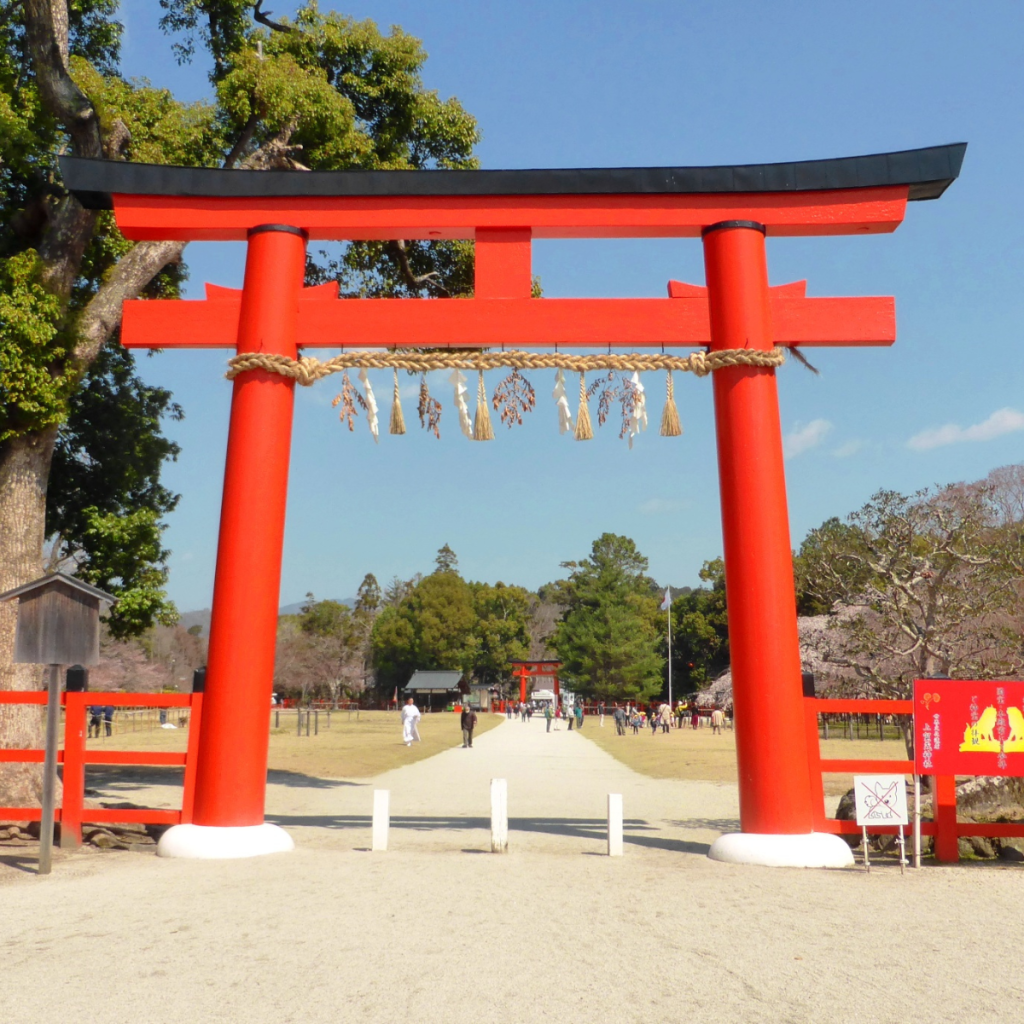
Date: November 23rd, 2023
Kamigamo Shrine Hosts Annual Armor Wearing Ceremony
The annual Yoroi Kizome-shiki ritual, which started in 2008, has increasingly drawn attention as it allows families to don samurai armor and celebrate the growth and good health of their children. The event takes place in the historic Kamigamo Shrine in late November, with people of all ages dressing up in samurai attire.
Usagi Juku: Ensuring Authenticity and Tradition
The festival is sponsored by Usagi Juku, a renowned armor manufacturer that promotes the authenticity and preservation of samurai culture. By supporting the Yoroi Kizome-shiki ritual, they ensure that the tradition rooted in a time-honored ceremonial process marking a boy’s transition into manhood remains alive.
Inclusive Participation for Boys and Girls
Taking an inclusive approach, the current incarnation of the ceremony allows both boys and girls to participate. Families create intricate lacquer-paper armor and helmets tied with cords for themselves and their children that they wear during the procession.
Prayers for Good Health, Growth, and Fortune
The strikingly colorful samurai attire sets the scene against the backdrop of vibrant autumn foliage at Kamigamo Shrine. Participants journey through its grounds to receive purification blessings in front of the main hall before heading inside for further prayers. The purpose of these rituals is to wish for good health, growth, and fortune for the younger generation taking part in this ancient custom.
Hands-on Experience with Armor-Making
Guests visiting Kamigamo Shrine during this auspicious event are encouraged to engage with the tradition by trying their hand at creating their own set of armor or watching others masterfully assemble elaborate pieces.
A Living Tradition Connecting Generations
The Yoroi Kizome-shiki ritual has become an important event in many families’ lives as they celebrate their children’s well-being and growth. It has also become an opportunity for the older generation to connect with and pass on the samurai legacy to the younger participants, maintaining a cultural touchstone that is both entertaining and educational.
Kodai-ji Autumn Illumination
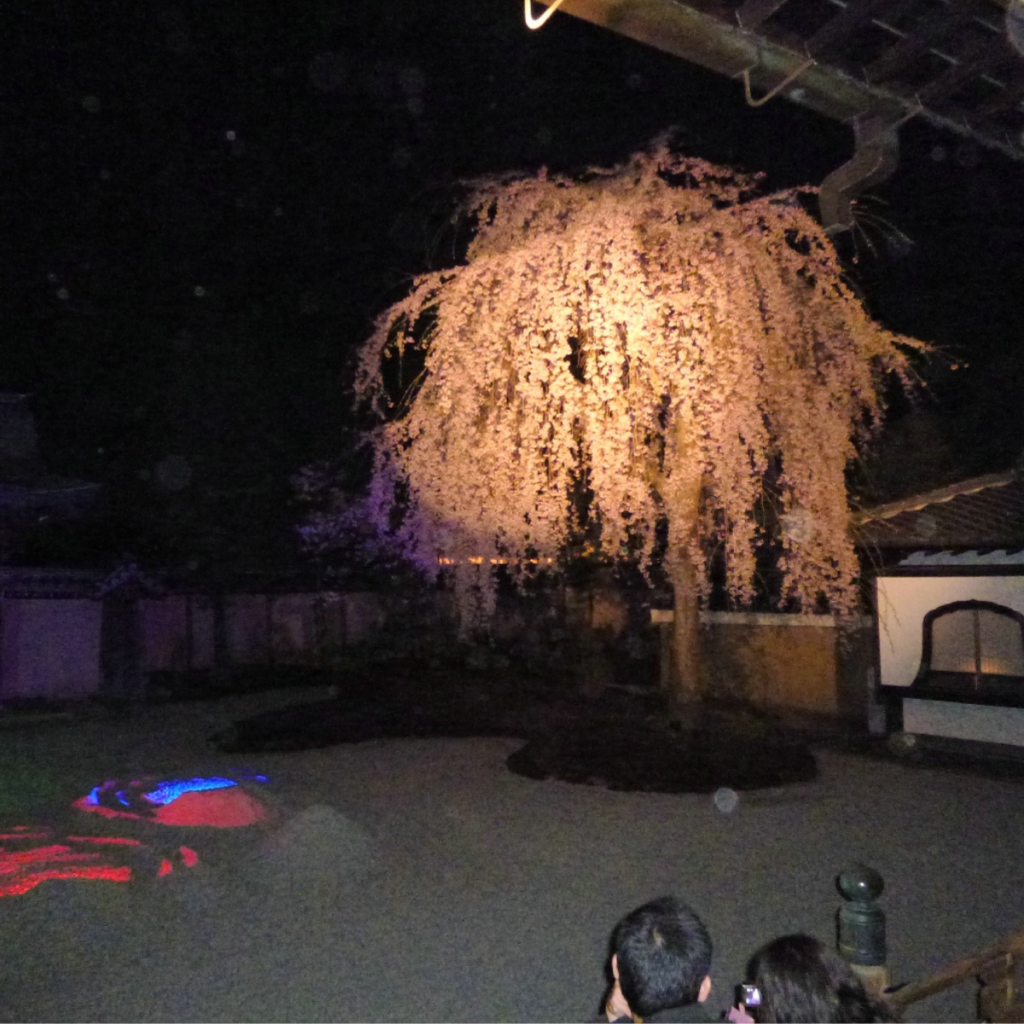
Date: Late Oct – Mid Dec 2023
Kyoto’s famous Kodai-ji Temple, formally known as Kodaijusho-zenji Temple, is set to come alive this November with its much-anticipated Autumn Illumination event. As the leaves change colors and fall in the Higashiyama Mountains of eastern Kyoto, visitors will be treated to a breathtaking spectacle of yellow, red, and orange hues as unique lighting arrangements cast their glow on the temple’s picturesque garden.
Kodai-ji Temple: A Rich History
Established in 1605 by Kita-no-Mandokoro in honor of her late husband, Toyotomi Hideyoshi, Kodai-ji Temple boasts an astonishing history that stretches back more than four centuries. Despite being ravaged by a series of fires after 1789, several original buildings have fortunately survived intact. These include Otama-ya, Kaisan-do, Kangetsu-dai, Kasa-tei, and Shigure-tei – all of which have been designated as “Important Cultural Properties” by the Japanese Government.
Spectacular Lighting Showcases Throughout the Year
Like many Japanese temples and shrines, Kodai-ji’s beautiful grounds host a number of spectacular seasonal events. In addition to the upcoming autumn showcase— which runs through the month of November — visitors can also experience enchanting light displays during spring and summer. T
Emphasizing Natural Beauty and Traditional Aesthetics
The Autumn Illumination at Kodai-ji Temple aims to highlight the natural beauty of Japan’s changing seasons. By meticulously arranging ambient lights around the ancient temple and garden areas, event organizers hope to provide visitors with a sense of tranquility and awe. This attention to detail, combined with the serene backdrop of Kyoto’s rolling hills and the temple’s rich history, makes Kodai-ji’s Autumn Illumination a must-see destination for both locals and tourists alike.
Additional Attractions During Autumn Illumination
While the temple grounds and seasonal displays are reason enough to visit Kodai-ji’s Autumn Illumination, additional attractions further enhance the experience. Visitors can enjoy refreshments at Kodai-ji’s teahouse, nestled within its immersive gardens. There, they can partake in a traditional tea ceremony or enjoy an authentic Japanese meal with stunning views of the illuminated temple grounds.
Plan Your Visit to Kodai-ji’s Autumn Illumination Event
To fully experience Kodai-ji Temple’s autumnal grandeur, consider planning your visit during peak fall foliage. The best time to catch these vibrant colors is typically in early November, though this may vary depending on the year. Regardless of when you choose to attend, this iconic event is sure to leave visitors of all ages with lasting memories of Kyoto’s cultural treasures.
Kyokusui no En
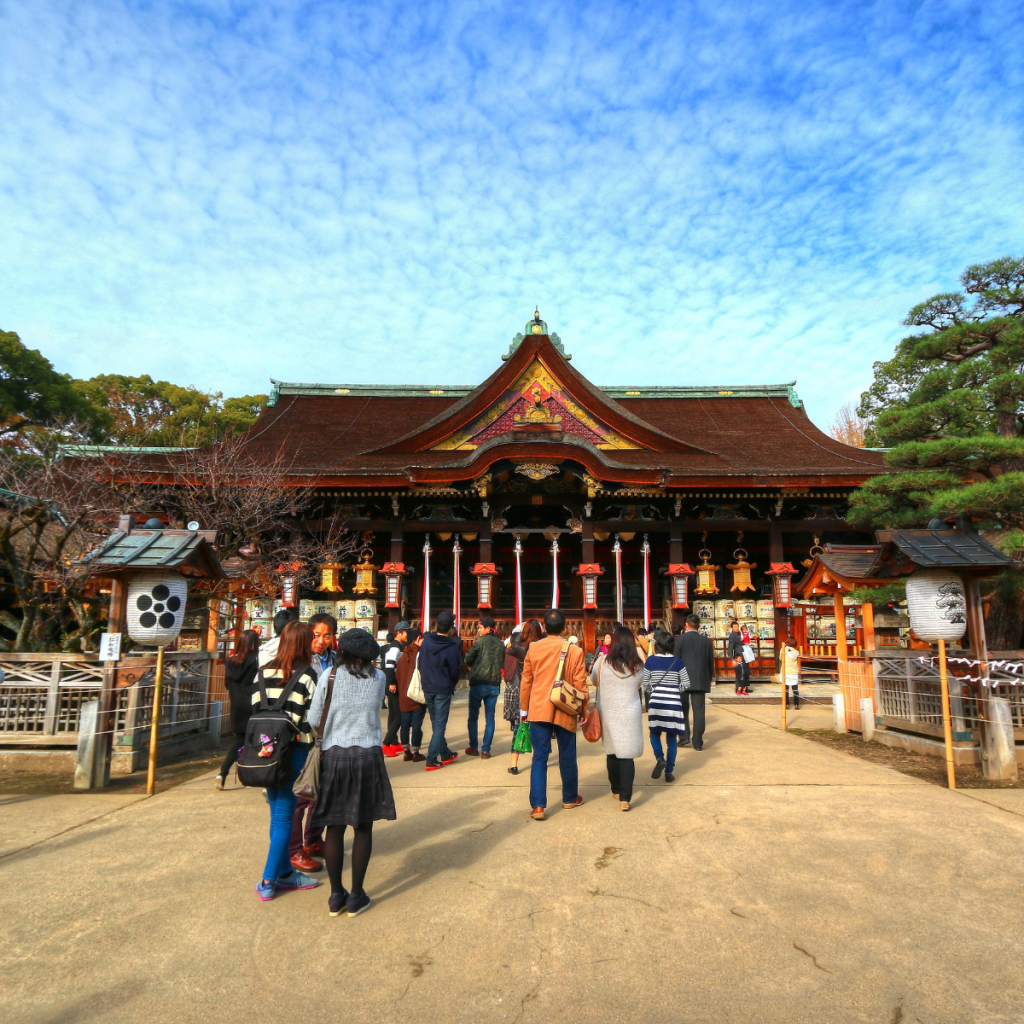
Date: Early November
Event Overview
Kyokusui no En is an annual event in Kitano Tenmangū Shrine in Kyoto each year on March and November.
About Kyokusui no En
The Kyokusui no En is an event that started during the Heian period, symbolising the flowing nature of life and its beauty. In this event, a cup of sake is floated down a stream from the ‘upstream’ position, which signifies age and experience. The participants seated downstream write a poem before the cup reaches them – if they finish writing their poem before the cup arrives, they have to drink it.
It’s a captivating spectacle drawing visitors worldwide due to its unique charm and its vivid display of Japanese heritage and culture.
Ikenobo Autumn Tanabada Exhibition
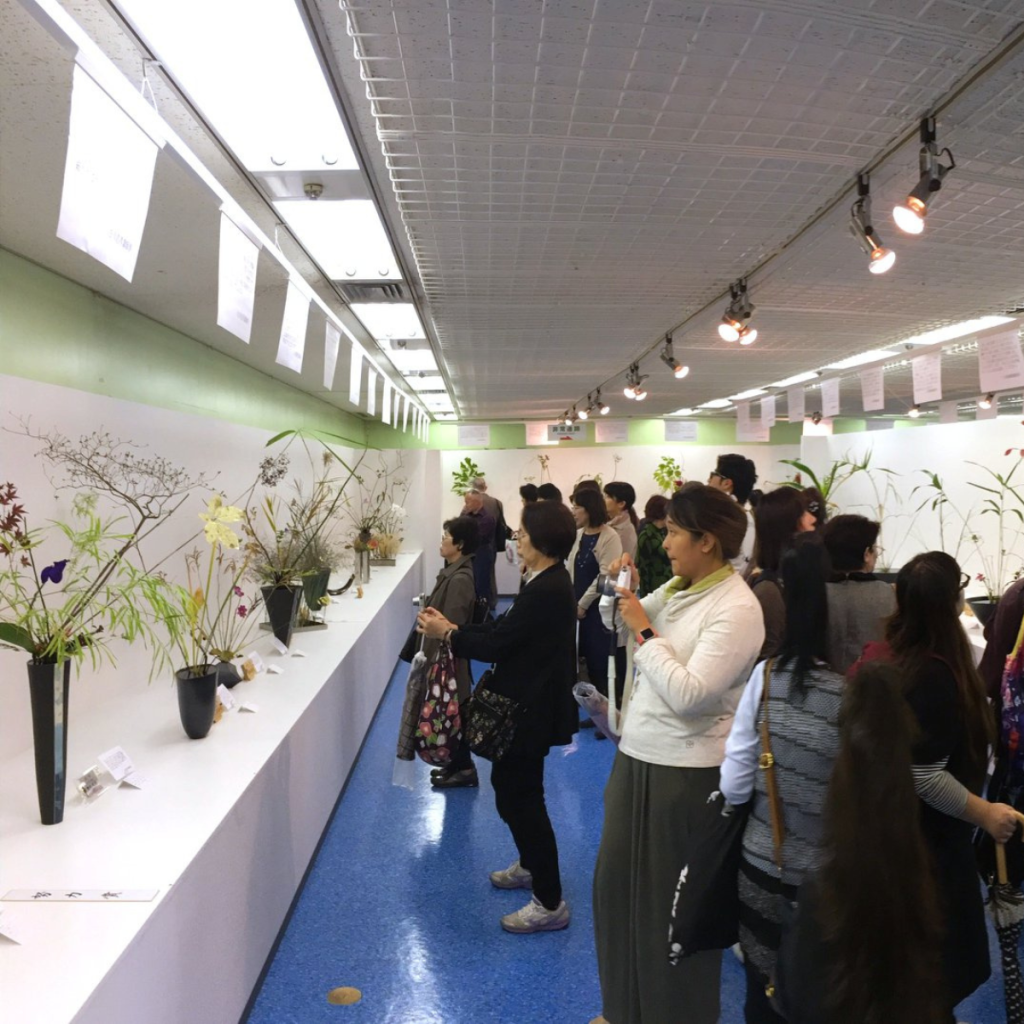
Date: Early-Mid November
Historical Context
The ancient and sophisticated art of Ikebana, Japanese flower arranging technique, has significantly grown in prominence, finding its inception during the Heian period (784 – 1185 AD). With deep roots in Japanese culture, it has played a significant role in Japanese Tea Ceremonies and is widely recognized as a refined form of home decoration.
Over the centuries, the art of Ikebana has evolved into an intricate system combining aesthetics with symbolic meaning where each carefully selected flower becomes a purposeful element beautifully rendered to shape. Unlike Western culture, which typically values appearance alone, Ikebana follows a strict set of principles rooted in Buddhist expression.
Ikenobo Autumn Tanabada Exhibition
Amidst not just flora prettiness but cultural expressions lies Autumn Tanabada Exhibition; An annual event held every November by the Ikenobo Headquarters and Ikenobo Society of Floral Art, it stands out as the largest and oldest exhibition from Edo era (1603-1868).
More than an assembly of floral compositions or painstakingly arranged pieces – each unique installation at the exhibition is a spectacular demonstration of thoughtfully curated cultural narratives through flowers. Ikenobo Autumn Tanabada Exhibition witnesses artists masterfully crafting Chrysanthemums – autumn’s emblematic bloom – applying astute balance between form, structure and color correspondent with seasonal variations.
Umekoji Park Handicrafts Market
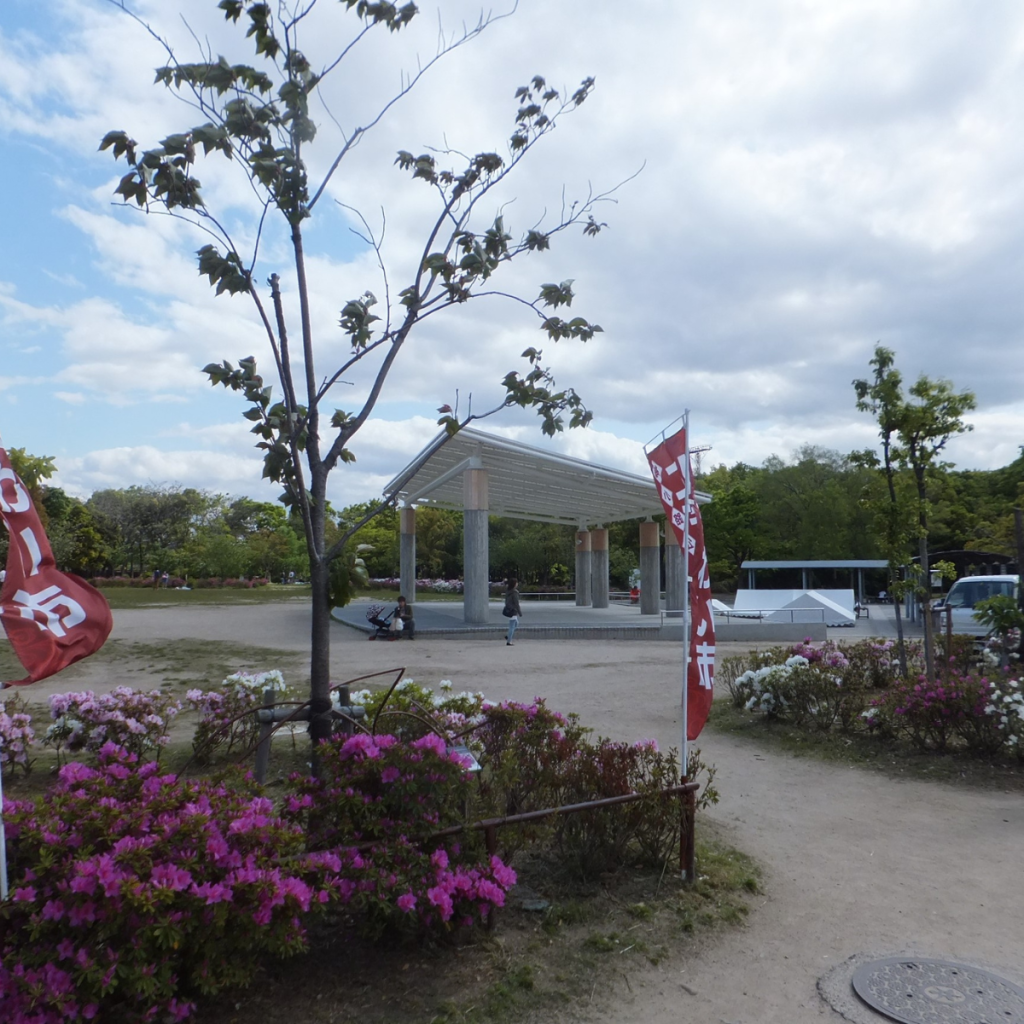
Date: November 4th, 2023 (First Saturday of every month except January and May)
Stunning Location and Accessibility
The Umekoji Park Handicraft Market is a monthly event that offers a delightful opportunity for locals and travelers to explore unique handmade items. The November market promises great fascinating finds, thanks to the cooler autumn weather attracting even more artisans and vendors. Surrounded by the lush greenery of Umekoji Park and conveniently located within a 10-minute bus ride from Kyoto Station, this handicrafts market has become a popular destination for families and tourists alike.
The market occurs on the first Saturday of each month except January and May. Featuring around 300 stalls, it attracts approximately 3,000 visitors each time, offering them space to browse comfortably compared to the bustling Hyakumanben Handicraft Market at Chion-ji Temple.
Unique Handmade Accessories Steal the Show
Among the highlights of the Umekoji Park Handicrafts Market are the numerous stalls offering unique handmade accessories such as earrings, rings, and necklaces. The distinct designs found across these various pieces cannot be found in mass-produced items, making them perfect for those seeking a truly personal touch.
Kiyomizu-yaki Pottery Delights Market-goers
In line with Kyoto’s reputation for exquisite Kiyomizu-yaki pottery, the Umekoji market features various stalls showcasing both handmade and specially painted pottery. Shoppers can choose from cups, rice bowls, plates, clay pots, and smaller decorative pieces at reasonable prices. The market also boasts pottery items with vibrant color palettes that bring an added level of charm to any dining table.
Tempting Bread and Sweets on Offer
For foodies, the Umekoji market does not disappoint, offering a wide range of handmade baked goods and sweets. Visitors can indulge in delicious treats like sliced bread, jams, waffles, and the famous French Canelé. One stall, in particular, prides itself on creating additive-free sweets made with high-quality ingredients, becoming a popular stop for many customers. Umekoji Park’s expansive green field also provides the perfect setting for a leisurely picnic with freshly purchased bread and sweets.
Home Décor and Kitchen Utensils Galore
Interior design enthusiasts will find the Umekoji market equally alluring as it offers an assortment of home décor and kitchen utensils to elevate daily routines and add a touch of nature to living spaces. Must-visit stalls include those that sell beautifully handcrafted natural chopping boards along with various other unique interior goods.
Market Etiquette
It is essential to note that the participating stalls at the Umekoji Park Handicrafts Market are chosen by ballot each time. As such, there is no guarantee that specific stalls will be present every month. However, this adds to the excitement of attending the market, as shoppers encounter something new each time they visit.
Family-friendly Destination
In addition to hosting the monthly handicrafts market, Umekoji Park is also home to the Kyoto Aquarium and Kyoto Railway Museum – making it an ideal location for a family day trip filled with fun activities and unique shopping experiences.
Ennichi (Tenjin-san) Market
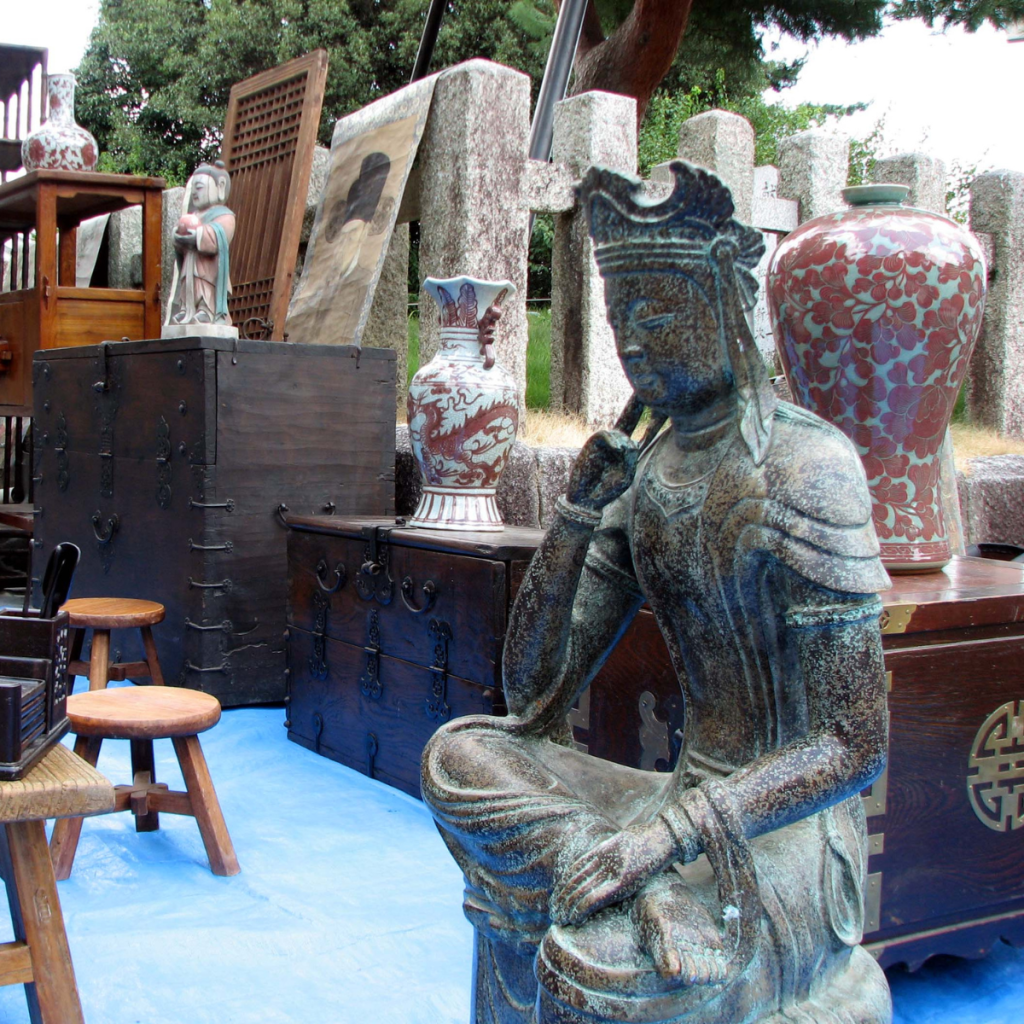
Date: November 25th, 2023 (25th of every month)
Kitano Tenmangu Shrine’s Monthly Flea Market Attracts Thousands
At the Kitano Tenmangu Shrine, a renowned cultural and historic site in Kyoto, visitors can experience the unique atmosphere of a vibrant flea market known as the Ennichi or Tenjin-san Market on the 25th of each month. November’s edition is no exception, drawing thousands of locals and tourists alike to enjoy shopping for antiques, clothing, food, and numerous other items.
The market commemorates Sugawara no Michizane, the enshrined god of the shrine, who was both born and died on the 25th. The tradition has been held for over 400 years and kicks off at around 6 a.m., wrapping up at 6 p.m. Each market attracts an estimated 50 to 60 thousand people, with even larger crowds gathering during special months such as January, February, June, and December.
Stunning Illumination at Kitano Tenmangu Shrine
Visitors attending the Tenjin-san Market after sunset will be treated to the breathtaking sight of Kitano Tenmangu Shrine’s main hall, illuminated by more than 350 stone lanterns and 250 paper lanterns. This enchanting scene contrasts sharply with the lively atmosphere earlier in the day when thousands of shoppers explore various offerings.
Antique Treasures at Ennichi Market
One of the defining features of Ennichi Market is its vast array of antique stalls. From traditional Japanese pottery to vintage clothing and jewelry, these stands are a haven for collectors looking to find unique pieces. Unlike some antique stores in Kyoto that might feel unwelcoming to tourists, Ennichi Market presents a friendly atmosphere where visitors can enjoy haggling prices with stall owners.
Beautiful Kimonos Found Throughout Tenjin-san Market
Many Ennichi Market stalls specialize in antique or repaired kimonos, ranging in styles, sizes, and prices. Tourists seeking the perfect kimono can find a diverse selection, and stall owners are always ready to discuss pricing and sizing information.
Family-friendly Entertainment at the Shooting Gallery
The Tenjin-san Market also offers traditional Japanese carnival games like shooting galleries for visitors of all ages to enjoy. Skilled participants might even win a prize, such as a toy or unique snack.
Savor Japanese Delicacies at Food Stalls
No trip to the Ennichi Market would be complete without indulging in the variety of street foods available. Local favorites like takoyaki, yaki soba noodles, karaage fried chicken, and oden can be found throughout the market. Food is served in small portions that are easy to enjoy while strolling around.
Whether you’re searching for a unique antique or want to experience Kyoto’s rich culture and history, November’s Ennichi (Tenjin-san) Market promises an unforgettable day of shopping, performances, food, and fun for everyone who attends.